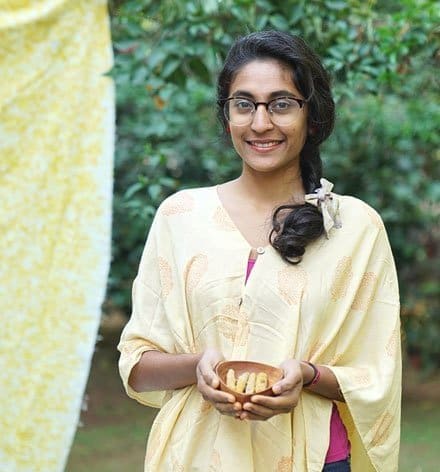Manya Cherabuddi uses natural waste by extracting their colours to form eco-friendly dyes.
Giving life to the dying art of creating natural dyes is Manya Cherabuddi. Having started creating natural colours months ago, the dye maker wanted to find a way to reuse plant waste which led to her using their colours in the form of cloth dye. “I would try and make things out of natural objects, but it wasn’t until I saw natural dyeing that I could see it being used meaningfully.
Dyeing to me was more impactful than making a painting as people can use it in their daily life and it makes a difference,” says Manya. “Beyond that, around 8,000 chemicals go into making the regular garments in the textile industry. So, the process of natural dyeing saves the environment to a greater extent while also making use of the natural products,” she adds.
Manya extracts colours from used flowers and vegetable wastes that include onion peel, carrot peel, leftovers of spinach, avocado stones, etc. Explaining the process of natural dyeing, Manya says, “Any natural material that you see around is a source of colour. However, the depth of the colour and how long it lasts depends on how you extract it.
Mostly people extract the colour by boiling the plant material. There are some materials like alum which is used as a mordant (to helps attach the colour to the cloth).” There is a process for preparing the fabric in a certain way so it absorbs the dye. “Then you make the dye solution (dye bath) with whatever material you want. Lastly, the fabric is soaked in it,” she explains. The process takes around a week’s time to be made from scratch into the final product that includes tailoring.

The dye maker also experiments with colours by mixing both vegetable and flower wastes. “If you want a purple colour, you can use beetroot or red cabbage to get the tint. Also, one can mix red and blue to get a purple colour. So you can play with colours and get a surprise element,” shares Manya. When quizzed if the colours last like the regular ones, Manya explains, “Some colours are not meant to last. Like the beetroot colour fades after a couple of washes because of the pH balance of water.
But there are other plant-based colours that last longer than others. Also, there are many who are doing research and created recipes for consistent results.” Apart from making dyes, Manya also specialises in baby wear. “I use really soft and natural fabrics and all natural colours for newborns and upto 3-year-olds as well. I also make accessories like scarves, dupattas and bags for adults. Moreover, I work with designers who want to use natural fabrics and dyes in their work and supply fabric to them.” The price range for baby wear is between around Rs 500 to Rs 1,500. To order, DM to her Instagram account @manya_cherabuddi.
Reference: https://telanganatoday.com/making-dyes-fashionably-ethical

